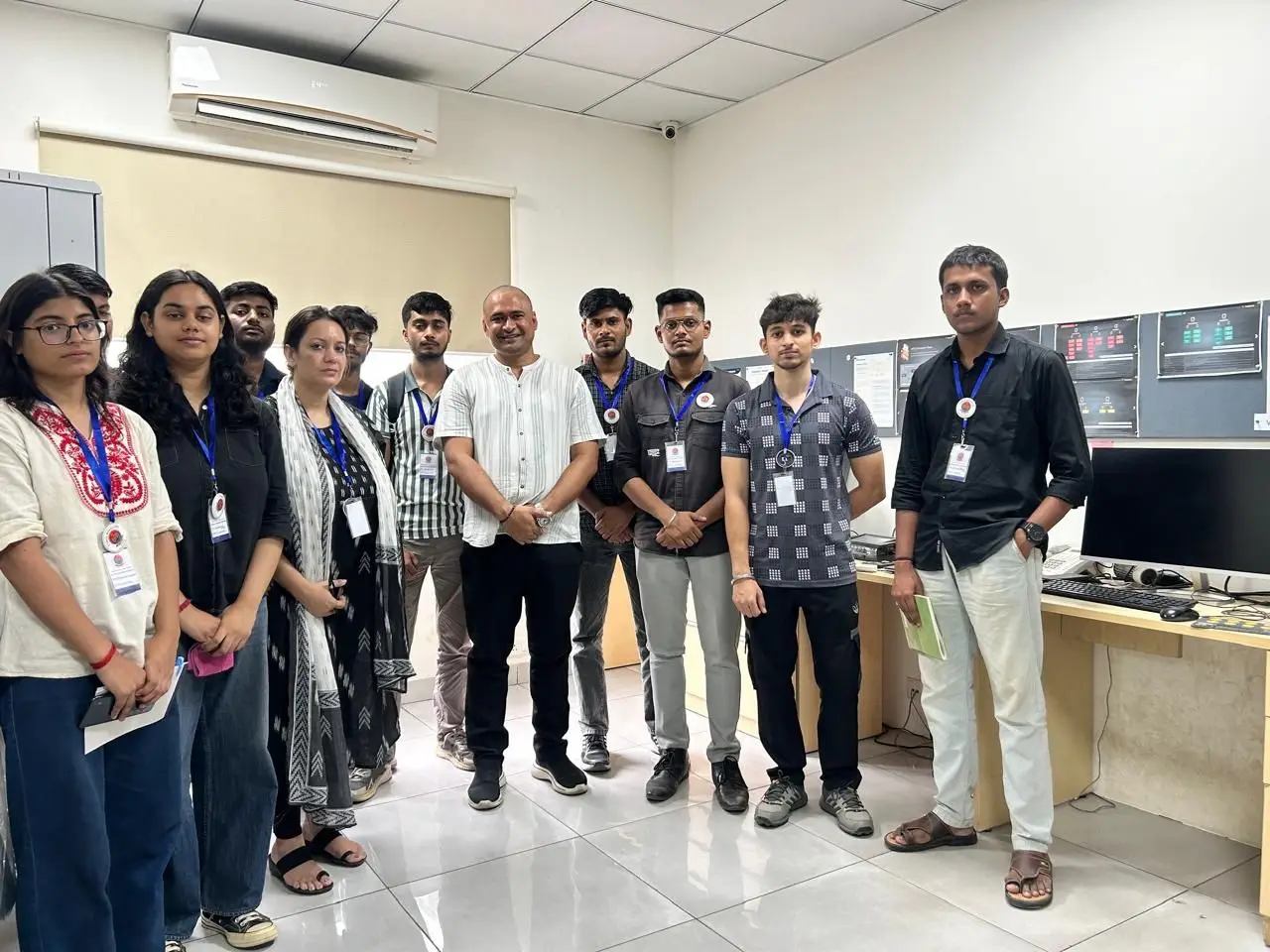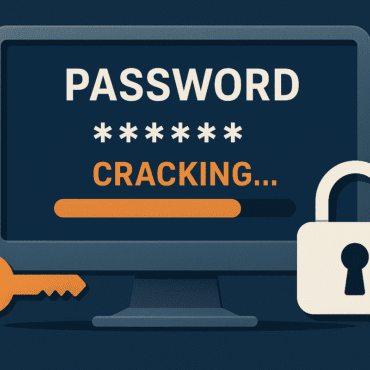
Different Types Of Smartphone Locks Explained
Different Types Of Smartphone Security Explained Password lock It is one of the most secure methods of smartphone protection. It requires the user to enter a custom alphanumeric password (letters, ...


Digital Forensics Omprakash Singh todayJuly 28, 2025

In today’s digital age, where vast amounts of data are generated and stored electronically, the importance of digital forensics has grown exponentially. Digital forensics is a branch of forensic science that focuses on the identification, acquisition, analysis, and reporting of digital evidence. It plays a crucial role in investigating cybercrimes, data breaches, fraud, and other legal matters. A thorough understanding of the digital forensics investigation process is essential for professionals in law enforcement, cybersecurity, and legal fields. This blog post delves into the various stages of a digital forensics investigation, providing a comprehensive overview of each step.
The first step in any digital forensics investigation is the identification of potential sources of evidence. This involves recognizing devices, media, and data that may contain relevant information related to the incident. Identification is a critical phase as it sets the scope of the investigation and ensures that all pertinent sources are considered.
Key Activities in the Identification Phase:
Recognizing Digital Devices: Identifying all types of digital devices that could be involved, such as computers, laptops, smartphones, tablets, servers, network devices, and storage media (e.g., hard drives, USB drives, memory cards). Each device has unique characteristics and storage methods that need to be understood.
Identifying Data Types: Determining the types of data that may be relevant. This includes documents, emails, images, videos, audio files, databases, logs, and temporary files. The nature of the data influences the tools and techniques used for analysis.
Understanding Network Infrastructure: Mapping out the network infrastructure to identify potential sources of evidence. This includes network devices like routers, switches, firewalls, and intrusion detection systems, which may contain logs and network traffic data.
Defining the Scope: Clearly defining the scope of the investigation to avoid unnecessary work and focus on the most relevant areas. This involves understanding the allegations, the time frame of the incident, and the potential impact.
Legal Considerations: Ensuring that all identification activities comply with legal requirements, such as obtaining necessary warrants or permissions before accessing devices or data.
Once potential sources of evidence have been identified, the next critical step is preservation. Preservation involves securing and protecting the digital evidence to maintain its integrity and prevent any alteration, deletion, or damage. This phase is crucial for ensuring that the evidence is admissible in court.
Key Activities in the Preservation Phase:
Creating Forensic Images: Creating bit-by-bit copies (forensic images) of the identified digital media. This ensures that the original evidence remains untouched and that all analysis is performed on the copies. Tools like EnCase, FTK Imager, and dd are commonly used for this purpose.
Write-Blocking Devices: Using write-blocking devices to prevent any data from being written to the original media during the imaging process. Write-blockers ensure that the forensic images are exact replicas of the original data.
Documenting the Process: Maintaining a detailed chain of custody log, documenting every action taken during the preservation process. This includes recording the date, time, location, and individuals involved in handling the evidence.
Secure Storage: Storing the original evidence and forensic images in a secure location with controlled access. This prevents unauthorized access and ensures that the evidence remains protected.
Hashing: Calculating cryptographic hash values (e.g., MD5, SHA-1, SHA-256) of the original media and forensic images to verify their integrity. If the hash value of the image matches the hash value of the original media, it confirms that the image is an exact copy.
The collection phase involves gathering digital evidence from the identified sources in a forensically sound manner. This requires following established procedures and using specialized tools to ensure that the evidence is admissible in court.
Key Activities in the Collection Phase:
Data Acquisition: Acquiring data from various sources, including hard drives, memory sticks, mobile devices, and cloud storage. The acquisition method depends on the type of device and the amount of data to be collected.
Live Acquisition: Performing live acquisition on systems that cannot be shut down without disrupting critical services. This involves using specialized tools to collect data while the system is running, minimizing the impact on operations.
Network Acquisition: Capturing network traffic using tools like Wireshark to analyze communications and identify potential evidence. This is particularly useful in investigating network-based attacks and data breaches.
Cloud Acquisition: Collecting data from cloud storage services, such as Google Drive, Dropbox, and AWS. This requires understanding the cloud provider’s policies and using appropriate tools and techniques to access and download the data.
Chain of Custody: Maintaining a detailed chain of custody log, documenting every step of the collection process. This includes recording who collected the evidence, where it was collected from, when it was collected, and how it was transported and stored.
The examination phase involves a detailed analysis of the collected digital evidence to identify relevant information and artifacts. This requires using specialized forensic tools and techniques to uncover hidden data, recover deleted files, and analyze file systems.
Key Activities in the Examination Phase:
Data Carving: Recovering deleted files and fragments of data from unallocated space using data carving techniques. This involves searching for specific file headers and footers to identify and extract data.
File System Analysis: Analyzing file systems (e.g., NTFS, FAT, HFS+) to understand how files are stored, accessed, and modified. This includes examining file metadata, timestamps, and directory structures.
Timeline Analysis: Creating a timeline of events by analyzing system logs, file timestamps, and other data sources. This helps to reconstruct the sequence of events and identify key activities.
Keyword Searching: Searching for specific keywords and phrases within the data to identify relevant information. This can be done using forensic tools or specialized search software.
Malware Analysis: Analyzing suspicious files and programs to identify malware and understand its functionality. This involves using techniques like reverse engineering, sandboxing, and signature analysis.
Email Analysis: Examining email headers, content, and attachments to identify relevant communications and track email activity. This includes analyzing email servers, logs, and client-side data.
Registry Analysis: Analyzing the Windows Registry to identify system configurations, user activity, and installed software. The Registry contains a wealth of information about the system’s history and current state.
The analysis phase involves interpreting the findings from the examination phase and drawing conclusions based on the evidence. This requires a deep understanding of digital forensics principles, as well as knowledge of the relevant laws and regulations.
Key Activities in the Analysis Phase:
Correlation of Data: Correlating data from different sources to build a comprehensive picture of the events. This involves connecting the dots between various pieces of evidence to understand the relationships and dependencies.
Pattern Recognition: Identifying patterns and anomalies in the data that may indicate suspicious activity. This includes looking for unusual file modifications, unauthorized access attempts, and other signs of compromise.
Attribution: Attempting to attribute the actions to specific individuals or groups. This involves analyzing user accounts, network traffic, and other data to identify the perpetrators of the incident.
Impact Assessment: Assessing the impact of the incident on the organization or individuals involved. This includes determining the extent of the damage, the cost of recovery, and the potential legal ramifications.
Developing Hypotheses: Formulating hypotheses about what happened based on the available evidence. These hypotheses should be tested against the data to determine their validity.
Peer Review: Conducting peer reviews of the analysis to ensure accuracy and completeness. This involves having another experienced forensic examiner review the findings and conclusions.
The final step in the digital forensics investigation process is reporting. This involves documenting the findings, conclusions, and recommendations in a clear and concise report. The report should be comprehensive, accurate, and easy to understand for both technical and non-technical audiences.
Key Activities in the Reporting Phase:
Executive Summary: Providing a brief overview of the investigation, including the objectives, methodology, and key findings. This allows readers to quickly understand the scope and results of the investigation.
Detailed Findings: Presenting the detailed findings of the examination and analysis phases, including descriptions of the evidence, the methods used to analyze it, and the conclusions drawn from it.
Supporting Evidence: Including supporting evidence, such as screenshots, log excerpts, and forensic images, to substantiate the findings. This provides readers with the ability to verify the accuracy of the report.
Conclusions and Recommendations: Drawing clear and concise conclusions based on the evidence and providing recommendations for preventing similar incidents in the future. This includes suggesting improvements to security policies, procedures, and technologies.
Technical Appendices: Including technical appendices with detailed information about the tools and techniques used in the investigation. This allows technical readers to understand the specific methods employed and to replicate the analysis if necessary.
Legal Review: Having the report reviewed by legal counsel to ensure that it is accurate, complete, and admissible in court. This helps to protect the organization from potential legal challenges.
Conclusion
The digital forensics investigation process is a complex and multifaceted endeavour that requires specialised skills, tools, and expertise. By following a systematic approach, digital forensics professionals can effectively identify, preserve, collect, examine, analyse, and report on digital evidence. A thorough understanding of each phase of the process is essential for ensuring that the evidence is admissible in court and that justice is served. As technology continues to evolve, the field of digital forensics will remain a vital component, playing a crucial role in safeguarding individuals, organisations, and society from cybercrime and other digital threats.
Sunny Chawla 02/07/2024 Trustindex verifies that the original source of the review is Google. Excellence in there work . True accuracy in there forensics examination Chandana Bafna 02/07/2024 Trustindex verifies that the original source of the review is Google. Overall i had a great learning session while pursuing the CHFI certification from Hawk Eye Forensics. As i had Hands on training provided on well equipped forensic digital tools and forensic workstation. The instructors were knowledgeable, the curriculum was comprehensive. The support I received throughout the process was exceptional. ADITYA CHAURASIYA 25/06/2024 Trustindex verifies that the original source of the review is Google. One of the digital forensic training forensicab is faboulue Vishwajeet More 25/06/2024 Trustindex verifies that the original source of the review is Google. This is where I got the experience of what real demonstration is. Talking about director Ashish sir, he explained everything through deep study. This in-depth knowledge boosted my thinking about doing research. If there really should be a guide for a thesis like Ashish sir. Kishan Roy 22/06/2024 Trustindex verifies that the original source of the review is Google. Amazing place to learn cyber forensic this lab is having all the necessary tool of digital forensic best training experience Ashish Rathore 14/06/2024 Trustindex verifies that the original source of the review is Google. Highly Knowledgeable, qualified & experienced employees who taught us with great patience. Latest tools & advanced technology are present in well maintained manner. ESHA SHUKLA 14/06/2024 Trustindex verifies that the original source of the review is Google. Higly knowledgeable, qualified and experienced employees taught us with great patience. Latest tools and advance technology Rajat Kumar 14/06/2024 Trustindex verifies that the original source of the review is Google. Latest tools and technology Good exposure for students Experienced employees Anand Samuel Victor 14/06/2024 Trustindex verifies that the original source of the review is Google. Experienced Employees. Good Exposure. Good For Students who want to work in Digital Forensics or Cyber forensic Field Load more Verified by Trustindex Trustindex verified badge is the Universal Symbol of Trust. Only the greatest companies can get the verified badge who has a review score above 4.5, based on customer reviews over the past 12 months. Read more
Written by: Omprakash Singh

Blog Omprakash Singh
Different Types Of Smartphone Security Explained Password lock It is one of the most secure methods of smartphone protection. It requires the user to enter a custom alphanumeric password (letters, ...


Copyright 2016-2025 all rights reserved by Hawk Eye Forensic.
Post comments (0)